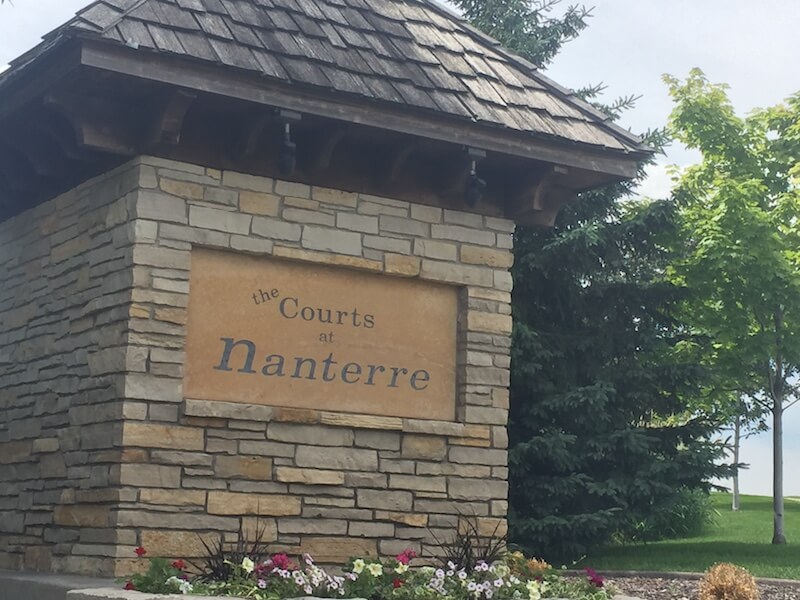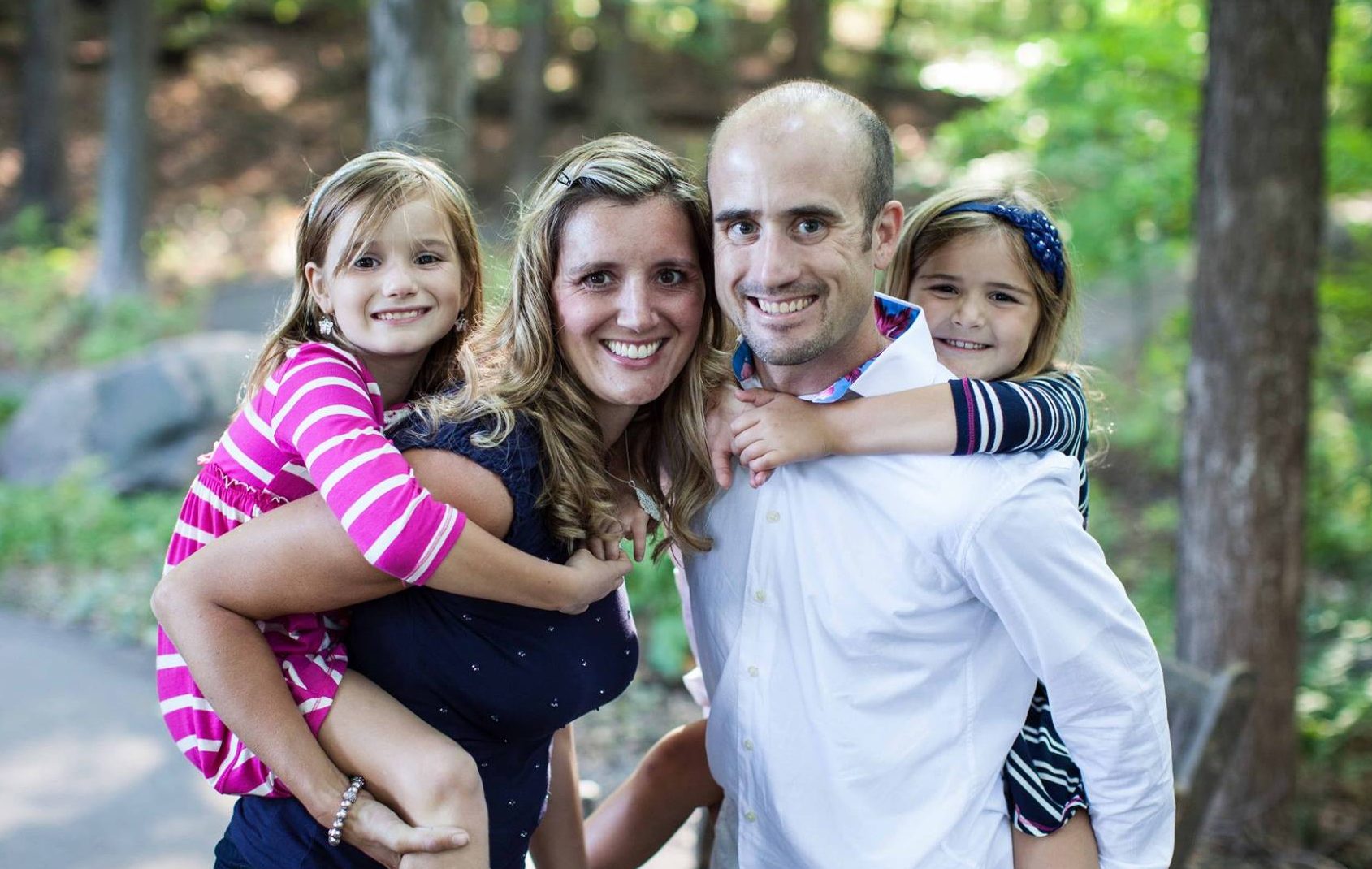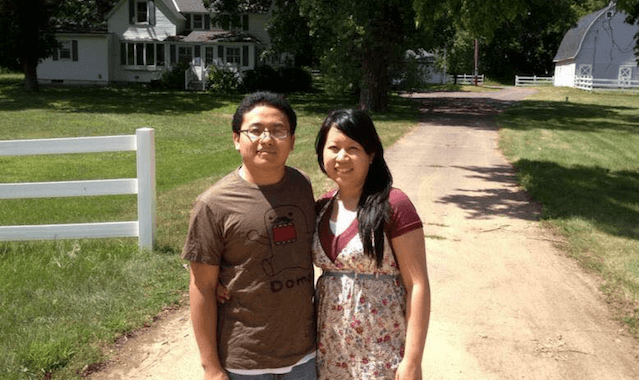Posted by Realtor David Olson 952.314.9446
Powderhorn: Community Life
The Powderhorn community is located near the center of the city of Minneapolis and is home to 8 distinct neighborhoods. A diverse and eclectic area, Powderhorn is home to a vast number of businesses, museums, parks, restaurants, stores, and people groups. While not located in the downtown area of Minneapolis, the Powderhorn community is located nearby, affording residents even greater variety. The following article gives a brief overview of the lifestyles found within each neighborhood. Each of the 8 neighborhoods contribute to the overall Powderhorn community and offer unique events and amenities.
Bancroft is a small but lively traditional and residential community in South Minneapolis, consisting mainly of single-family homes assembled before 1940 that are owner-occupied, rest among tree-lined streets, and are affordable. As mentioned before, neighborhood commercial services are available along Bloomington Avenue and 38th street consists of several small businesses. For residents who like recreation, the Hiawatha Golf Course and the scenic Minnehaha Creek are in adjacent neighborhoods. The Bancroft Neighborhood is pinpointed only minutes south of downtown Minneapolis with useful access via Interstate 35W, allowing the commute to work to be easy and smooth for this population of around 3,000 residents.
The neighborhood is mostly residential with several places of worship. Although there are not many options for dining or entertainment within this residential neighborhood, there are countless options located within minutes distance in any direction.
Bryant is in south Minneapolis, within the Powderhorn community and is bordered on the north by 38th Street East, on the west by Interstate 35W, on the south by 42nd Street East and on the east by Chicago Avenue. The neighborhood derived its name from William Cullen Bryant, a famous American poet who lived from 1794 to 1878. Bryant is a smaller neighborhood that has quick entrance to downtown via I-35 and bike lanes along Park and Portland Avenues. The neighborhood possesses affordably priced home in a variation of styles. Phelps Park and Recreation Center provide residents of all ages with fun activities as does the adjacent Powderhorn Park. 38th Street provides neighborhood retail opportunities and the 3,500 residents are working to frequently improve this commercial strip by offering improvement grants, participating in city-led planning, and engaging in regeneration efforts.
The Bryant neighborhood is mostly residential with several places of worship. Although there are not many options for dining or entertainment within the residential area, there are countless options all located just minutes distance in any direction.
The Central neighborhood was named after Minneapolis Central High School, one of the city’s biggest schools back in the day before it was deconstructed. The neighborhood is bounded by Lake Street on the north and 38th Street on the south. Interstate 35W is the western border and Chicago Avenue is the eastern border. This residential neighborhood of nearly 8,000 residents is littered with mainly single-family dwellings are sprinkled with multifamily low-rise buildings.
The name Central coincides with its geographical location as it is nestled rather accurately in the center of south Minneapolis. Central is a fully diverse, suitably located, city neighborhood. Chicago and 4th Avenues, and Lake and 38th Streets serve as Central’s main commercial strips. The Central neighborhood’s attraction continues to grow as it fascinates those who not only love the neighborhood’s lovely, historic housing options and lively, diverse community, but also its close proximately to everything the city provides in the way of employment, entertainment, and recreation.
There are several unique dining options within the Central neighborhood. Safari Restaurant is modern Somali/African restaurant. They provide a variation of food items for everyone to enjoy the taste of. The Safari menu contains three major categories, which are, Traditional African Cuisine, Contemporary Cuisine, and Safari Specials. Join them any day of the week for lunch or dinner and explore some of the best ethnic foods available in Minneapolis. Their cuisines are prepared from fresh and exclusive ingredients. This amazing restaurant is sure to please. The Blue Ox Coffee Company is another wonderful option within the neighborhood. Serving hot and cold specialty coffee drinks, hot teas, espresso, chai, pastries, quiches, paninis, sodas, and more, the Blue Ox Coffee Company is a great place to relax, work, or spend time with a friend. Another great option within the Central neighborhood is the Modern Times Cafe. The Modern Times Cafe prides themselves on their diverse and accessible menu. With vegan, vegetarian, organic, fair-trade, and carnivorous options available, there is something for everyone at the Modern Times Cafe. Open for breakfast and lunch, Modern Times Cafe is a great choice for groups with a differing dietary restrictions.
Like the community as a whole, Corcoran is a diverse and vibrant neighborhood. The neighborhood has great connections to downtown through the Hiawatha LRT, Hiawatha Avenue, and the Midtown Greenway. Lake Street is Corcoran’s main commercial strip and the Midtown Farmers’ Market, a project of the Corcoran Neighborhood Organization (CNO), brings the all-local food and program of more than 70 farmers and vendors to 40,000 people each year, is located there. There are an assortment of housing types in Corcoran including cottage-style, bungalow, and foursquare. Most homes were built before 1920. This neighborhood of about 3,500 residents is a great place to live.
There are several landmarks found within the Corcoran neighborhood. At the Chatterbox Pub, the owners have worked diligently to advance a status as both a unique and flavor-filled pub that will shock visitors, as well as offering excellent and professional service that will make anyone feel content. Laughter at the jokes is readily available on any given night. The banquet facility is perfect for rehearsal dinners, business meetings, holiday get-togethers, birthdays and other special events. Movies are available on the projector and screen, including TV specials like major sports events. This pub is a great atmosphere for an evening drink or a late-night hangout. The Bright Moon Restaurant and Coffee Shop is another landmark. An African restaurant specializing in great coffee and delicious food, Bright Moon is best known for its extensive buffet. With traditional African dishes, meat cooked to perfection, and a variety of flavorful sides, the buffet has been recognized for its quality as well as quantity. Patrons can also order a wide array of dishes off of the menu or enjoy coffee in the lounge area. Corcoran is also the host of the Midtown Farmers Market. A gathering of over 80 different vendors from the local area, the Midtown Farmers Market is the go-to destination for fresh produce, local art, and delicious local prepared foods. Residents can enjoy a taste of the countryside in the heart of the busy city.
Lyndale, located in the Powderhorn community of Minneapolis, is bordered on the north by Lake Street, on the east by Interstate 35W and Stevens Avenue, on the south by 36th Street, and on the west by Lyndale Avenue South. The neighborhood got its name from Lyndale Avenue, which derives its own name from Lyndale farm, a 1,400-acre farm owned by Hon. William S. King. In turn, the name of the farm was in memory of Mr. King’s father, Rev. Lyndon King, a travelling Methodist preacher of northern New York. The neighborhood is mainly residential, with a large fraction of property in parcels occupied by multifamily residential purposes. Commercial purposes manage to converge along Lake Street. The Lyndale neighborhood has one of the largest populations of the city neighborhoods with 8,000 residents.
Hola Arepa is a restaurant and food truck serving Latin cuisine in the streets of Minneapolis. They specialize in Venezuelan stuffed arepas, which is the perfect vehicle for their delightful Latin-style fillings. The arepas are handmade fresh everyday from cornmeal dough, made into patties and cooked on a griddle. Then, they’re stuffed with meats, veggies, cheeses, and topped with homemade salsas. All of the food is made from scratch and with lots of care. The restaurant and food truck service is very popular in the neighborhood and hosts a number of community and private events. Another great ethnic dining option is the Hibachi Buffet, which is “Minneapolis’ best Chinese restaurant”. They specialize in providing customers with delicious Chinese food and Asian cuisine. Although not a fancy restaurant, this place is sure not to disappoint. If you come with a big appetite, you can count on the Hibachi Buffet to take care of it. One of the more unique venues in the neighborhood is Pat’s Tap. A gastro pub and local favorite restaurant, Pat’s Tap is known for their zany atmosphere, personable service, and competitive Skee-Ball events. The tap has several Skee-Ball tables that offer friendly competition and amusement. In addition to the fun events, Pat’s Tap has extensive brunch, lunch, and dinner menus in addition to numerous beers and wines.
Powderhorn Park, within Minneapolis’ Powderhorn community, got its name from Powderhorn Park Lake, a small lake formed like a powder horn. People congregate for cultural events and community activities in the park and by the lake. The neighborhood is bordered on the north by Lake Street, on the east by Cedar Avenue South, on the south by 38th Street East, and on the west by Chicago Avenue. Powderhorn Park is predominantly a residential neighborhood, where single-family houses and smaller residential lots are numerous. The city annexed the neighborhood in 1887 along with most of the housing.
Powderhorn Park is a flourishing and diverse neighborhood. Known for its annual Art Fair and May Day Festival, Powderhorn residents are exceedingly creative and active in their community. The regenerated Lake Street is home to many unique small businesses and the established art deco Sears Building compound that is now the Midtown Exchange. Powderhorn Park is well served by LR transit and residents have convenient access to the Midtown Greenway. They can easily walk to popular destinations along Lake Street and 38th Street. This neighborhood of 9,500 residents is a wonderful place to live.
The Midtown Greenway is a 5.5-mile long former railroad strip in the Powderhorn community and it passes through Powderhorn Park with bicycling and walking trails. The Hennepin County Regional Railroad Authority owns it and the trails are preserved by the City of Minneapolis. The Midtown Greenway Coalition is the group that effectively encouraged the creation of the Midtown Greenway by means of public agencies. The Coalition exists to this day and engages the community in protecting, improving, and using the Greenway. This Greenway has been used for biking and other activities ever since it was first built.
There are many landmarks that can be found within the Powderhorn Park neighborhood. Matt’s Bar and Grill is a local favorite and nationally-known. Famous for their claim as the creators of the famous “Jucy Lucy” cheeseburger (Matt’s is adamant that the proper spelling is Jucy), Matt’s Bar and Grill has been featured on the Travel Channel, in TIME Magazine, and has even been visited by Barack Obama, 44th President of the United States. Regardless of whether or not they were the true creators of the legendary Minnesotan burger, Matt’s Bar and Grill delivers great food in a fun atmosphere. Another famous landmark in the Powderhorn Park neighborhood is the Mercado Central. A collection of shops, restaurants, and bakeries from Latin descent, Mercado Central features wonderful Central American and Spanish foods, events, treats, and arts. The Spanish influence within the area is both immersive and exciting. Visitors will be sure to discover many sights, sounds, and smells that hail from Latin cultures worldwide.
For many in the neighborhood, the MayDay Parade is a time to rejoice the approaching warmth with hand-built puppets and masks, music, and performance along the local the streets. Community workshops start the first Saturday in the month of April and the local theater provides a giant studio space. Throughout the month, neighbors are invited to the 16 public workshops, and all who enter contribute in the building of this collective story through the creation of puppets and masks. By the time the parade is underway on the first Sunday of May, a great number of community members have gotten involved with putting on the festivities.
The Powderhorn Art Fair, one of the premium local and regional art fairs in the country, rejoices artistic illustration and community involvement. Hosted in the green, 66-acre local Powderhorn Park, the Powderhorn Art Fair showcases 184 regional and national artists of diverse masteries, as well works done by local artists in the neighborhood. The Powderhorn Art Fair is a partnership between the Powderhorn Park Neighborhood Association and the Minneapolis Park and Recreation Board.
Standish is located within the Powderhorn community. This neighborhood was named after an area elementary school, which had been called Miles Standish after a work by the poet Henry Wadsworth Longfellow. It was considered the outskirts of the city until immigrants, mainly Swedish and Norwegian, started developing housing here in the early 1900’s. Today, it is a predominantly residential neighborhood. The new light-rail train lines along the Hiawatha Avenue passageway links the neighborhood with downtown, the Minneapolis-St. Paul International Airport and the Mall of America.
Standish is an unwavering, vibrant, and peaceful neighborhood of around 6,000 residents. Beautiful parks, playgrounds, and schools all feature something fun and interesting for residents of any age to enjoy. Small businesses provide convenience and professional service to shoppers, while all appreciate the neighborhoods’ low crime rate, safety, and family friendly environment. The integration of light rail to the area’s infrastructure has brought new excitement, advancement, and transportation to Downtown Minneapolis, as well as the surrounding suburbs.
When summer finally comes, the neighbors all celebrate with one another. The Neighborhood Events Committee offers a free and catered Colombian dinner from Cafe Racer, ice cream, live music, and a bounce house. Residents throughout the neighborhood all enjoy this annual event.
There are several popular eateries within the Standish neighborhood. At Colossal Café, all meals are served in larger proportions than other restaurants. The cafe is mainly known for its breakfast items. There are three locations that can be found in St. Paul, Como, and Minneapolis’ Ericsson neighborhood. With its extensive menu and great service, Colossal Café “keeps them comin’ back”. Northbound Smokehouse and Brewpub is a full-service restaurant with an on-site craft brewery. They opened just recently in 2012 with the aspirations of being a comfortable neighborhood bar. They won the City Pages “Best Brewpub” award in 2013, after only being open for 5 months. They also won the City Pages “Best Neighborhood Bar- Minneapolis” in 2014. They smoke almost anything on the menu, from turkey, beef, and pork to cheese and eggs. Their beer has received great approval from the locals in the neighborhood. If you haven’t been yet, anytime is a good time for this popular dining location.
Whittier is known as the “International Neighborhood.” With more than 15,000 residents embodying 30 countries with more than 25 languages spoken. In Whittier, locals have access to the amenities of a wonderful and intriguing neighborhood while staying minutes from downtown, with convenient access to the Midtown Greenway bike/pedestrian passageway and LR transit service.
Whittier also provides a mix of architectural homes, with housing fluctuating from grand mansions and brownstone row houses, to modest wood frame homes of the early 1900’s and apartment buildings from the 1920’s and the 70s.
The Midtown Greenway is a 5.5-mile long former railroad strip in the Powderhorn community and it passes through Whittier with bicycling and walking trails. The Hennepin County Regional Railroad Authority owns it and the trails are preserved by the City of Minneapolis. The Midtown Greenway Coalition is the group that effectively encouraged the creation of the Midtown Greenway by means of public agencies. The Coalition exists to this day and engages the community in protecting, improving, and using the Greenway. This Greenway has been used for biking and other activities ever since it was first built.
The Minneapolis Institute of Arts (MIA) stimulates a phenomenon of imagination and wonder with astonishing displays and one of the greatest wide-ranging art collections in the country. From Monet to Matisse, Asian to African, 40,000-year-old artifacts to world-famous modern masterpieces, the MIA links the past to the present and empowers global conversations. This nationally recognized organization is within the Whittier neighborhood.
Rock climbing is one of the quickest growing sports in the United States and Vertical Endeavors is one of the renowned frontrunners in the industry. Created in 1992, and within Whittier and other locations in the Midwest, Vertical Endeavors activates some of the largest amenities in the nation in terms of rock climbing. Visitors of all ages and aptitudes can climb throughout the year in a climate-controlled facility. Options and levels of difficulty are available for all skill levels and offer a great test of physicality and mental strength.
While by no means a comprehensive analysis of what each neighborhood has to offer, this article provides a brief overview. If you would like to learn more about what makes each individual neighborhood unique, please feel free to check out our supporting articles.
© Copyright 2015, www.TwinCitiesPropertyFinder.com. All Rights Reserved.
Powderhorn: Parks & Trails
Powderhorn Community: A Brief Overview
Related City Articles





















